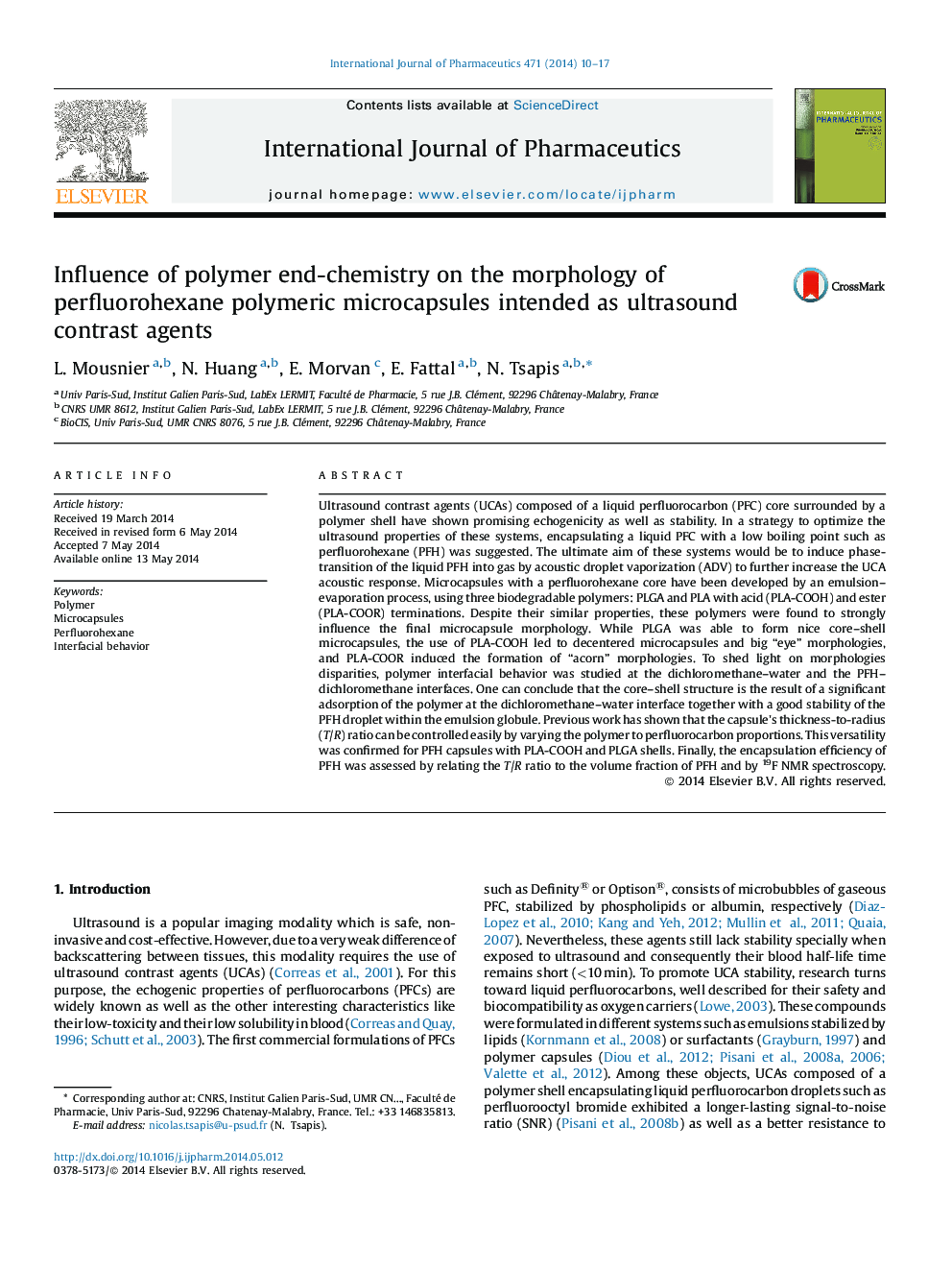| کد مقاله | کد نشریه | سال انتشار | مقاله انگلیسی | نسخه تمام متن |
|---|---|---|---|---|
| 5819302 | 1557355 | 2014 | 8 صفحه PDF | دانلود رایگان |
- We have used PLGA and PLA with acid (PLA-COOH) and ester (PLA-COOR) terminations to formulate microcapsules containing perfluorohexane. PLGA led to nice core-shell microcapsules; PLA-COOH led to decentered microcapsules and big “eye” morphologies, and PLA-COOR induced the formation of “acorn” morphologies due to different interfacial properties.
- The core-shell structure is the result of a significant adsorption of the polymer at the dichloromethane-water interface together with a good stability of the PFH droplet within the emulsion globule.
- For PLGA-PFH and PLA-COOH microcapsules, the capsule's thickness-to-radius ratio can be controlled easily by varying the polymer to perfluorocarbon proportions.
Ultrasound contrast agents (UCAs) composed of a liquid perfluorocarbon (PFC) core surrounded by a polymer shell have shown promising echogenicity as well as stability. In a strategy to optimize the ultrasound properties of these systems, encapsulating a liquid PFC with a low boiling point such as perfluorohexane (PFH) was suggested. The ultimate aim of these systems would be to induce phase-transition of the liquid PFH into gas by acoustic droplet vaporization (ADV) to further increase the UCA acoustic response. Microcapsules with a perfluorohexane core have been developed by an emulsion-evaporation process, using three biodegradable polymers: PLGA and PLA with acid (PLA-COOH) and ester (PLA-COOR) terminations. Despite their similar properties, these polymers were found to strongly influence the final microcapsule morphology. While PLGA was able to form nice core-shell microcapsules, the use of PLA-COOH led to decentered microcapsules and big “eye” morphologies, and PLA-COOR induced the formation of “acorn” morphologies. To shed light on morphologies disparities, polymer interfacial behavior was studied at the dichloromethane-water and the PFH-dichloromethane interfaces. One can conclude that the core-shell structure is the result of a significant adsorption of the polymer at the dichloromethane-water interface together with a good stability of the PFH droplet within the emulsion globule. Previous work has shown that the capsule's thickness-to-radius (T/R) ratio can be controlled easily by varying the polymer to perfluorocarbon proportions. This versatility was confirmed for PFH capsules with PLA-COOH and PLGA shells. Finally, the encapsulation efficiency of PFH was assessed by relating the T/R ratio to the volume fraction of PFH and by 19F NMR spectroscopy.
283
Journal: International Journal of Pharmaceutics - Volume 471, Issues 1â2, 25 August 2014, Pages 10-17
